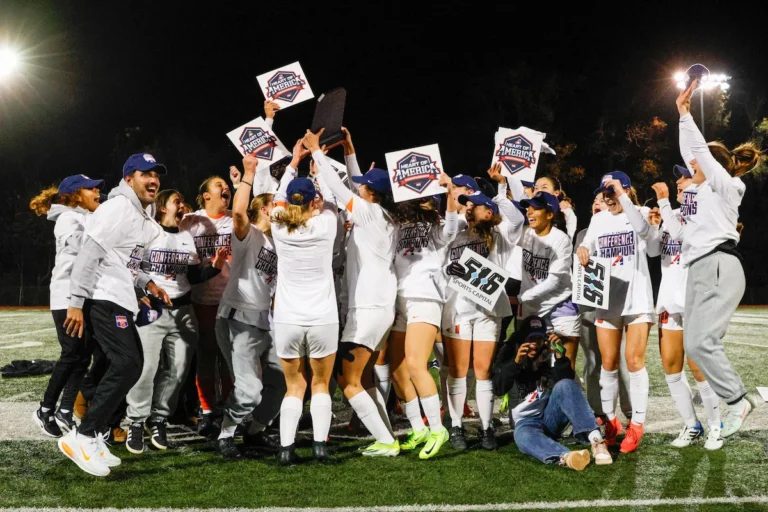
Major Changes in US College Soccer: Season Extension
A better college football experience and a pathway to professional leagues
Important news for college football players! The U.S. Soccer Federation, through the NextGen College Soccer Committee, has proposed major changes to Division I college football, including men’s and potentially women’s programmes. These reforms aim to modernise the sport and bring it closer to professional standards.
One of the biggest updates is the extension of the college football season, turning it into a full academic year sport. This would give players more time to train, recover, and compete at a high level.
Let’s take a closer look at what this proposal means and how it could impact your sporting future.
Why Is College Football Facing Major Changes?
The college football season is played during the autumn semester, starting in August and finishing in November or December, depending on how far universities progress in the NCAA Tournament. Teams often play two matches per week, which creates a tight and demanding schedule.
This system has been criticised for being too compressed, financially strained, and disconnected from global football standards.
On 16 October 2025, U.S. Soccer and the NextGen College Soccer Committee published a white paper proposing major reforms to address these issues. The key suggestions include transforming Division I football into a year-round sport, creating regional leagues to reduce travel, introducing a promotion and relegation system, and increasing flexibility around players’ eligibility.
The proposal is a transformative step towards a more professional future for college football.
What Are the Major Changes Proposed by U.S. Soccer?
1. Extending the college football season
Under this model, the season will begin in August and finish in April, with a winter break between December and January and a national championship held in May. Matches would be played at weekends rather than having multiple fixtures in a week. This aligns college football with professional schedules seen in European leagues and Major League Soccer (MLS).
2. Regionalisation
The proposal suggests that college football should separate from the usual conference system and create four large regional leagues, each with about 50–54 teams. Each region would have two competitive levels: a top tier and a lower tier. In the top level, there would be two divisions of nine teams each, while the lower level would include four divisions organised geographically.
Throughout the year, teams would play other universities in their division twice, plus a few matches against teams from outside their division. There will be a total of 18–22 matches in the season.
3. Promotion and relegation model
This system would allow teams to move up or down between tiers based on their performance, just like in professional leagues around the world.
4. More professional opportunities
Currently, college athletes cannot play with professional clubs. The new model would change that, allowing players to train or play with professional teams in the off-season without losing eligibility. U.S. Soccer also suggests allowing athletes who have previously played professionally to return to college football.
What Are the Benefits of These Reforms?
The U.S. Soccer proposal would bring many benefits to college football, including:
- Improved student-athlete experience with more rest and better competition balance.
- Better player development through longer, higher-quality seasons.
- Reduced travel costs thanks to regional leagues.
- Stronger professional pathways, allowing players to connect with clubs in MLS, USL, or even abroad.
- Enhanced visibility and commercial growth with better broadcasting opportunities.
When Will These Changes Happen?
The goal is to introduce the new system for Division I men’s football as early as the 2026–27 academic year, depending on approval from the NCAA and universities. Changes to women’s college football may follow later, since the structure and number of teams differ from the men’s game.
The proposal is expected to face some resistance, as it requires major financial and administrative adjustments.
How Does This Affect Me?
The U.S. Soccer and NextGen College Soccer Committee proposal opens the door to a more professional experience, offering better training conditions and a clearer pathway to professional teams. It allows players to pursue their professional ambitions while earning a university degree. If approved by the NCAA, it could become one of the most significant reforms in the history of college sports.
The key changes proposed include:
- Extension of the college football season to a full academic year
- Regionalisation of college football leagues
- Introduction of a promotion and relegation system
- Allowing players to train or play with professional clubs without losing college eligibility
At Keystone Sports, we specialise in supporting student-athletes who want to play college football in the U.S. Whether it’s finding sports scholarships or understanding eligibility rules like this, we’re here to help you along the way.
Ready to learn more about your options? Reach out to us today, and let’s explore how you can make the most of your college sports journey!
Share this article:

About the author
Lorena Montañés
Lorena Montañés, SEO Specialist at Keystone Sports, played DI football at California State University, Fresno, while earning degrees in Mass Communication & Journalism and Psychology. She later earned an MBA in Business Analytics while coaching at a Division II university. Now, her goal is to encourage other student-athletes to pursue their dreams and have a life-changing experience.
More related articles

Esport Scholarships in the USA: What They Are and How You Can Secure One
Esports has grown enormously in popularity over the past few years and has evolved into a competitive sport. The exciting news? Universities in the USA are now offering scholarships for esport players!

How to Get a Rugby Scholarship in the US
With the growing popularity of rugby in American universities, more opportunities are becoming available for UK players to obtain rugby scholarships. Here’s everything you need to know about scholarships for rugby and how to get one!

Top Tips for Football Scholarships in America for UK Students
Earning a football scholarship to play in the U.S. is a dream opportunity for UK players. This guide provides the best tips for UK players to get recruited, including the importance of football showcases, physical preparation, and networking with coaches.

